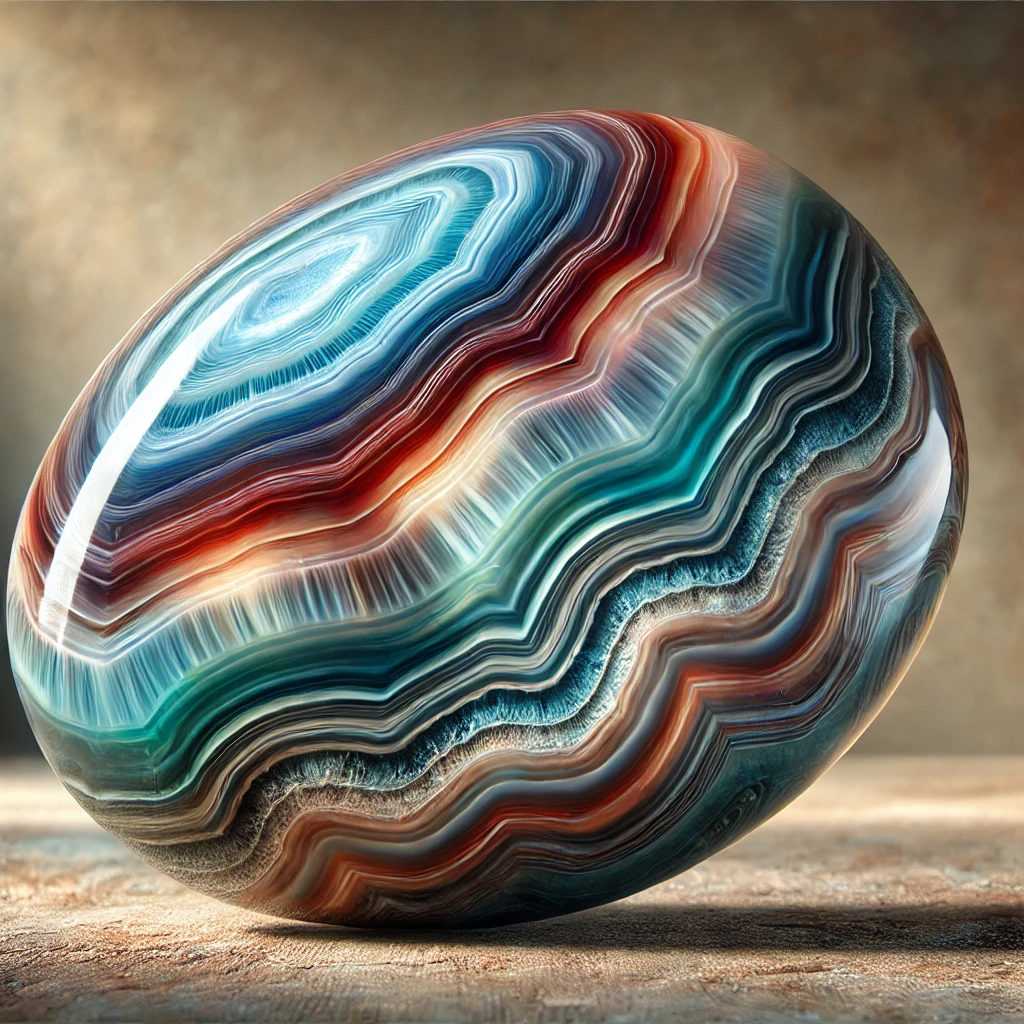Agate: Stone of Stability, Balance & Healing Energy
Overview and Meaning
Agate is a variety of chalcedony, a microcrystalline form of quartz, known for its banded patterns, vibrant colors, and grounding energy. It has been used for centuries as a protective and stabilizing stone, fostering balance, strength, and emotional resilience.
Agate is one of the most versatile and widely available gemstones, occurring in many colors and patterns, each with unique energy properties. It is considered a stone of harmony, bringing stability to the mind, body, and spirit.
1. History and Mythology
- The name Agate comes from the Achates River in Sicily, where it was first discovered in ancient Greece.
- In ancient Egypt, Agate was used for amulets, seals, and ceremonial jewelry, symbolizing protection and strength.
- Greek and Roman civilizations believed Agate could ward off storms and natural disasters.
- Persian and Islamic cultures considered Agate a stone of good fortune and divine blessings.
- Many medieval healers and alchemists used Agate to balance emotions and boost vitality.
2. Healing and Metaphysical Properties
✅ Emotional Stability – Helps with stress relief, self-acceptance, and inner peace.
✅ Protection & Grounding – Shields against negative energy and promotes physical well-being.
✅ Mental Clarity – Enhances focus, logical thinking, and problem-solving skills.
✅ Chakra Connection – Depending on its color, Agate aligns with various chakras for energy balance and healing.
Agate is often used in meditation, energy healing, and spiritual practices to create a sense of security and stability.
3. Variations and Colors
Agate occurs in a wide variety of colors and patterns, with each type carrying specific metaphysical properties:
| Type of Agate | Color & Appearance | Key Properties |
|---|---|---|
| Blue Lace Agate | Soft blue with delicate white bands | Calming, communication, throat chakra activation |
| Moss Agate | Green with moss-like inclusions | Growth, abundance, nature connection |
| Fire Agate | Deep red, orange, and brown with iridescent flashes | Protection, passion, courage |
| Botswana Agate | Pink, gray, and brown banded layers | Comfort, emotional healing, inner stability |
| Dendritic Agate | White or gray with black tree-like patterns | Connection to nature, perseverance, grounding |
| Crazy Lace Agate | Swirling patterns of red, yellow, and orange | Joy, optimism, vitality |
| Black Agate | Solid black or dark brown | Protection, grounding, strength |
Each variation of Agate enhances specific aspects of life, making it one of the most adaptable and widely used stones in energy work.
4. Uses and Jewelry
- Agate is commonly used in rings, bracelets, necklaces, and decorative carvings due to its durability and beauty.
- It is a popular stone for meditation, often used in crystal grids, energy healing, and feng shui practices.
- Many people place Agate geodes or slabs in their homes or workspaces for energetic balance and protection.
5. Care and Maintenance of Agate
5.1 How to Cleanse and Charge Agate
- Water Cleansing: Agate can be rinsed with lukewarm water, but avoid prolonged soaking.
- Sunlight Charging: Place in gentle sunlight for a few hours, but excessive sun exposure may cause fading.
- Moonlight Charging: Leave under a full moon to cleanse and recharge its energy.
- Smudging: Use sage, palo santo, or incense smoke to remove negative energy.
- Selenite or Quartz Charging: Place Agate near Selenite or Clear Quartz to amplify its properties.
5.2 Storing and Handling
- Agate is relatively hard (Mohs hardness of 6.5-7) but should be stored separately from harder stones like Diamonds or Sapphires to prevent scratches.
- Avoid exposure to harsh chemicals or extreme temperatures.
Conclusion
Agate is a versatile and powerful gemstone that brings balance, protection, and emotional resilience. Whether using it for jewelry, meditation, or energy work, Agate offers a grounding and stabilizing presence in daily life.

